Why Nonprofits Need SEO and Tips To Advance your Mission
Use SEO to advance your mission. What is SEO for nonprofits? Why is it important? Tips - Think Like Your Audience. Create A Keyword Strategy. Have SEO Guide the Design of Your Website + 6 more tips.
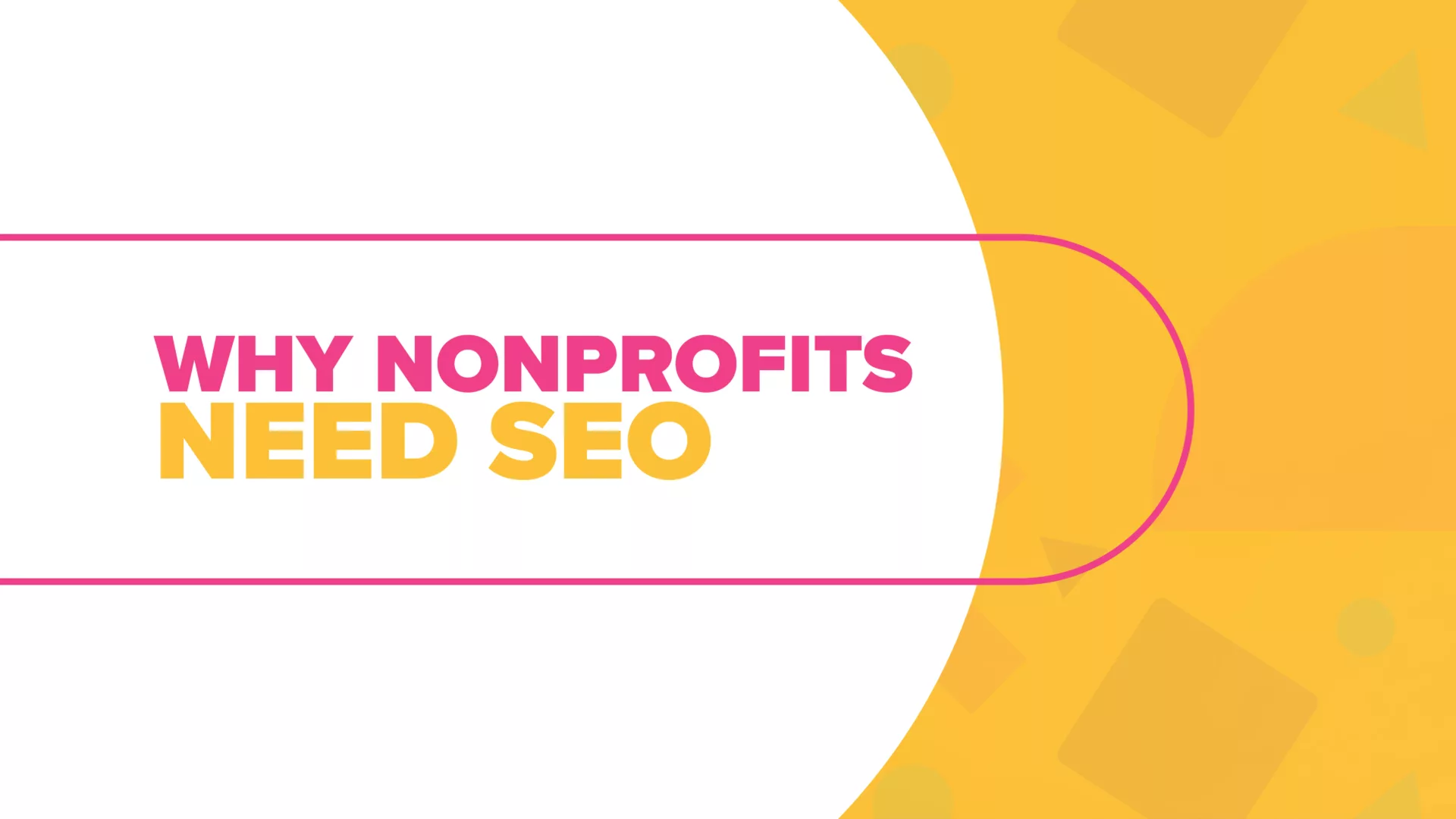
Our previous post covered high level topics about Digital Marketing for Nonprofits. SEO for nonprofits was introduced in that article.
M+R Benchmarks 2021 reported that organic traffic comprised 44% of all nonprofit website traffic in 2019.
SEO (search engine optimization) for nonprofits should be an essential part of any nonprofit’s strategy to advance its mission. Top organic search results should match anyone actively searching for ways to support nonprofits like yours.
This article serves to help nonprofits get a clear picture of how SEO should fit into your organization’s mission and purpose.
What Is SEO?
Search engine optimization (SEO) is an inbound marketing process that helps websites rank organically (non-paid, natural search results) in google and other search engines.
Here’s what organic search results look like:
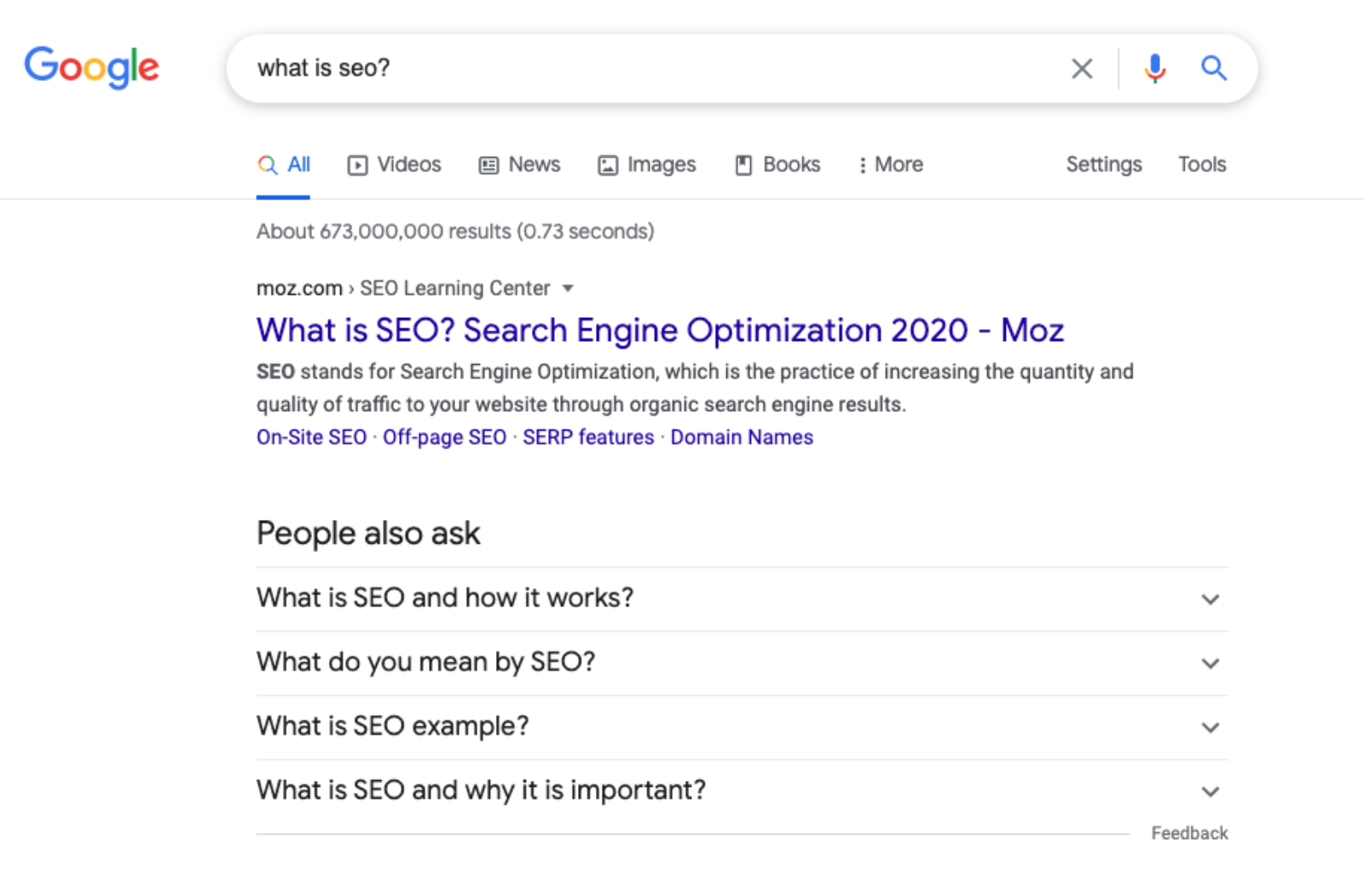
And here’s what paid search results look like (notice the “Ad” before the URL):
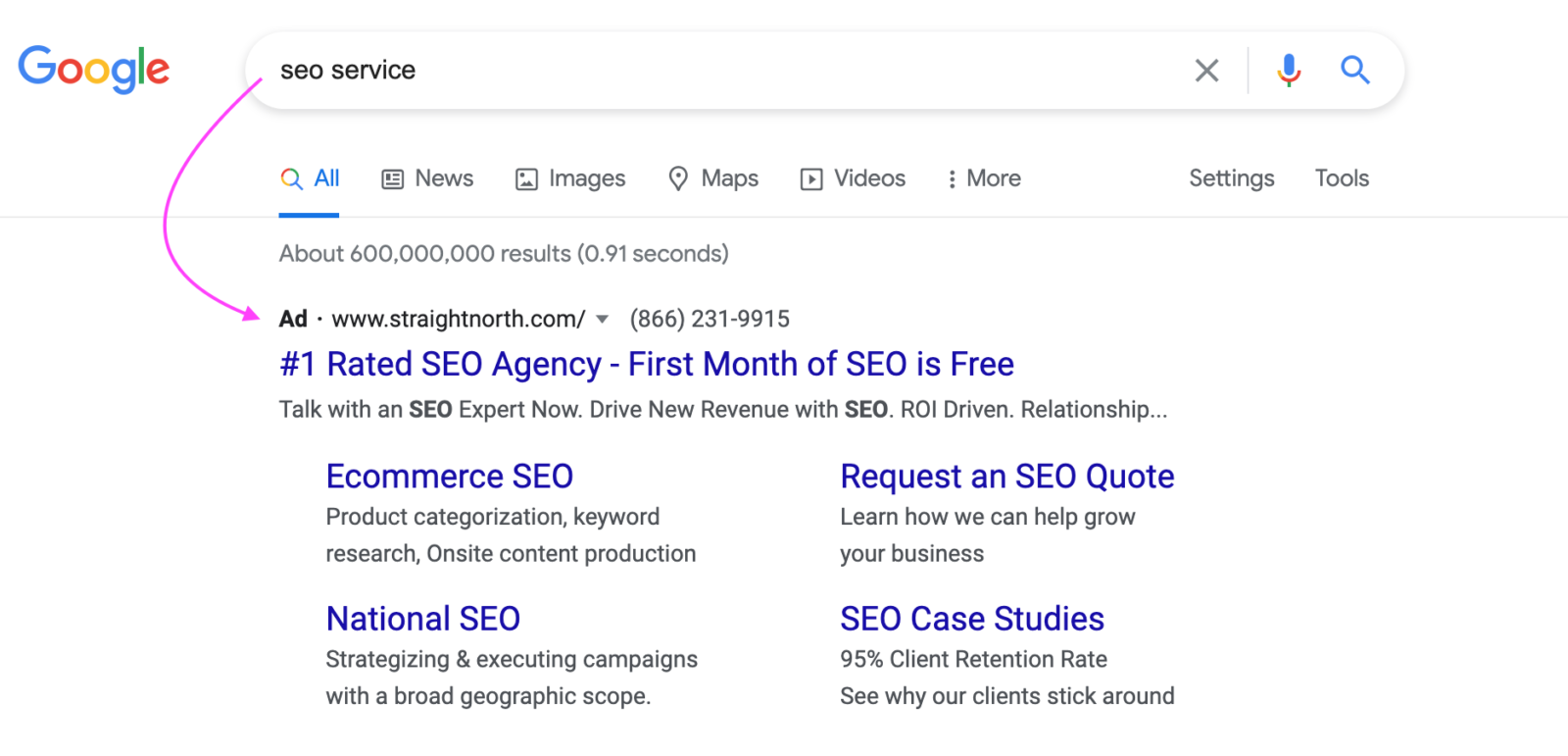
The first example shows a webpage that ranks #1 for the query, and it earned that spot based on hundreds of ‘signals’ determined by search engines.
The second example shows a webpage that ranks #1 among paid ads that are competing through bids and other factors. If advertisers target a keyword such as ‘seo service’ shown above, then their ads will appear above organic search results.
To be clear, SEO is not free. It takes a great deal of time and effort whether in-house or contracted out. Someone has to put in the time and effort.
Some organic traffic can lead to donations and other organizational key metrics. In 2018, $427.71 billion was given to nonprofit charities.
How many of those individuals, businesses and foundations discovered and donated to a nonprofit through a search engine?
It’s an important question to ask and one that we’ll explore next.
Why Is SEO Important for Nonprofit Organizations?
Since many nonprofits run on tight budgets, SEO is a relatively inexpensive and effective way to ‘passively’ attract qualified donors and other important constituents.
Let’s further elaborate on these important reasons.
More Online Giving
Blackbaud reported that online giving has grown 17% from 2016-2018.
Steven MacLaughlin points out that donor behavior reflects consumer behavior. So online giving AND online consumer spending both have been increasing in recent years.
All this points to the general trend that digital transformation is impacting the nonprofit sector. This means that nonprofits must continually improve the giving process and reduce any possible friction, including SEO.
Organic Channel Speaks to the Right Audience
Organic traffic represents visitors who find your website through a search engine. This means the visitor did not click an ad to find out about your organization. Your website was optimized for that specific search without ‘pushing’ out any paid advertisement. This is why SEO is considered passive inbound marketing.
This kind of traffic gives potential donors and constituents the ideal experience of finding exactly what they want without any overt advertising interruption (besides search ads, but that’s another topic).
Organic visitors have the greatest potential to speak to the most important groups of people that are going to contribute to your organization’s mission.
In her book about nonprofit management, Martha Golensky says, “To maximize the effective use of scarce resources, managers must focus on the groups deemed most critical to the enterprise’s overall success” (p. 225, Strategic Leadership and Management in Nonprofit Organizations).
So the organic channel could be a great way to focus on the most important audience that can support your organization’s goals.
Corporate Donations
Many companies choose to donate a percentage of sales to nonprofit organizations. One of my favorite clothing brands is Everlane because of their quality, style and also their corporate mission to uphold high ethical practices.
Recently they’ve been running a matching gift campaign to donate up to $300,000 to a nonprofit organization called Oceana. This money will be used to fund Oceana’s campaign to put an end to single-use plastic.
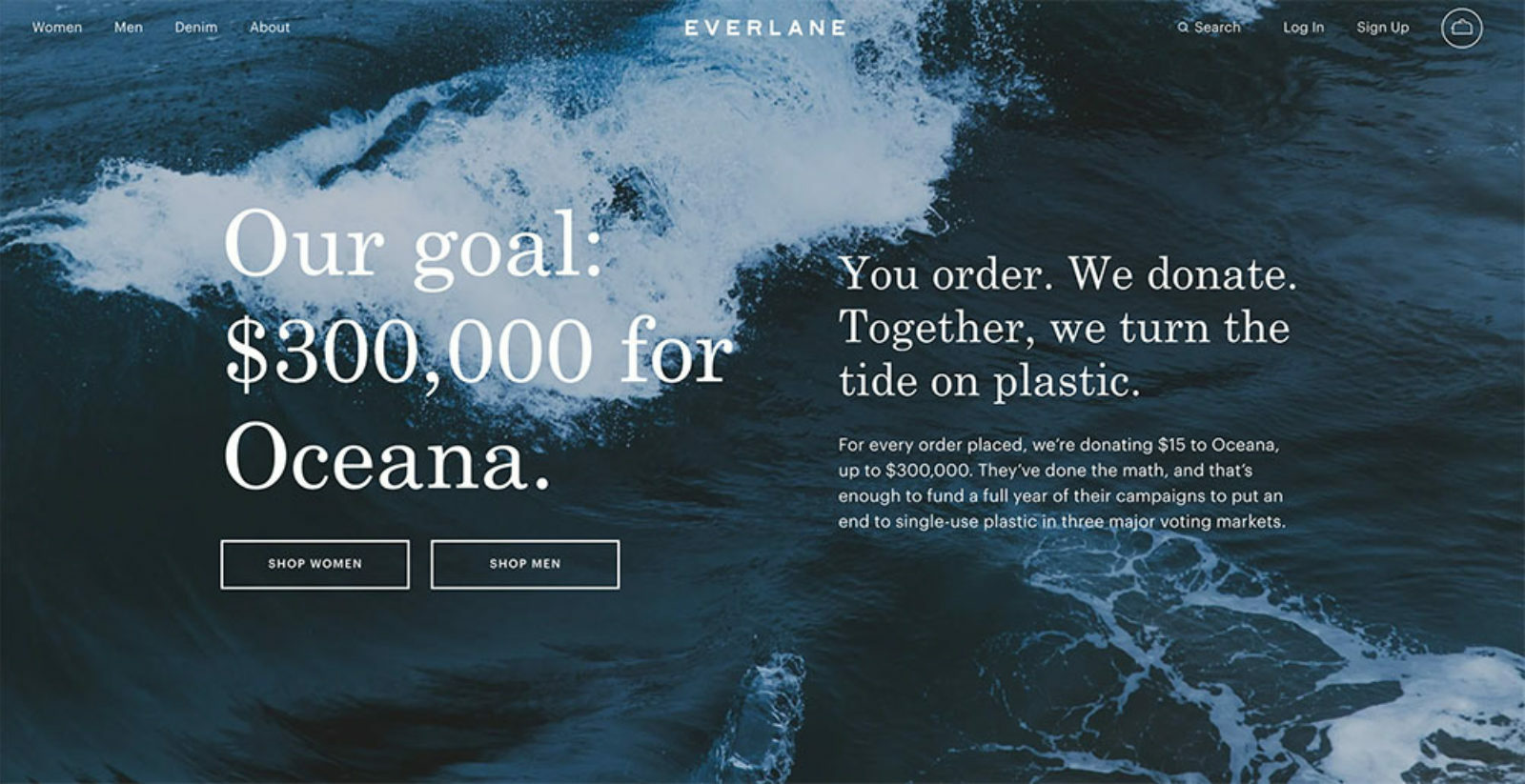
Here is why SEO for nonprofits is important in this scenario. Let’s imagine I’m in charge of public relations for my company and I need to choose a nonprofit for our annual budget for gift matching. We’re still a new company and our goal for the year is to generate local awareness.
One of the first things I’ll do is start asking around the office of any ideas about what local organizations are worth helping. Eventually I will probably do a google search to see what’s around the area.
This is the pivotal moment that can provide valuable long term inbound marketing opportunities for a nonprofit organization.
Good SEO capitalizes on this window of opportunity that could be a recurring search. This is why SEO is a great long term investment that is usually at a fraction of the cost compared to traditional paid advertising.
Top SEO Tips To Advance A Nonprofit Mission
Generally speaking, nonprofits should utilize the same marketing techniques but an entirely different approach compared to for profit organizations. Typically, the goal is to promote an idea or message rather than a product. Therefore the approach must be different in this space.
Below is a shortlist of what I consider the most salient points for nonprofit organizations that want to use SEO to further their mission.
1. Think Like Your Audience
To think like your audience means you know your audience. It’s constant challenge to avoid making assumptions. My background in advertising research and planning taught me a lot about integrating good research with good strategy and creative execution.
For instance, did you know that those 55 years old and over prove to be in the highest retention bracket as both online and offline donors?
I certainly split the older and younger generation in my mind and assumed0 that the younger generation would be more consistent long-term donors to causes they care about. This shows how important actual primary and secondary research about our audience is toward a successful campaign.
2. Create A Keyword Strategy
What Are Keywords?
Keywords are words or phrases that are used in search engines as queries. Some of these queries are single words and at other times they can be phrases and they’re quite long.
Keyword research tools such as SEMrush and Moz Keyword Explorer provide the data to understand the volume of different queries and other analytical tools.
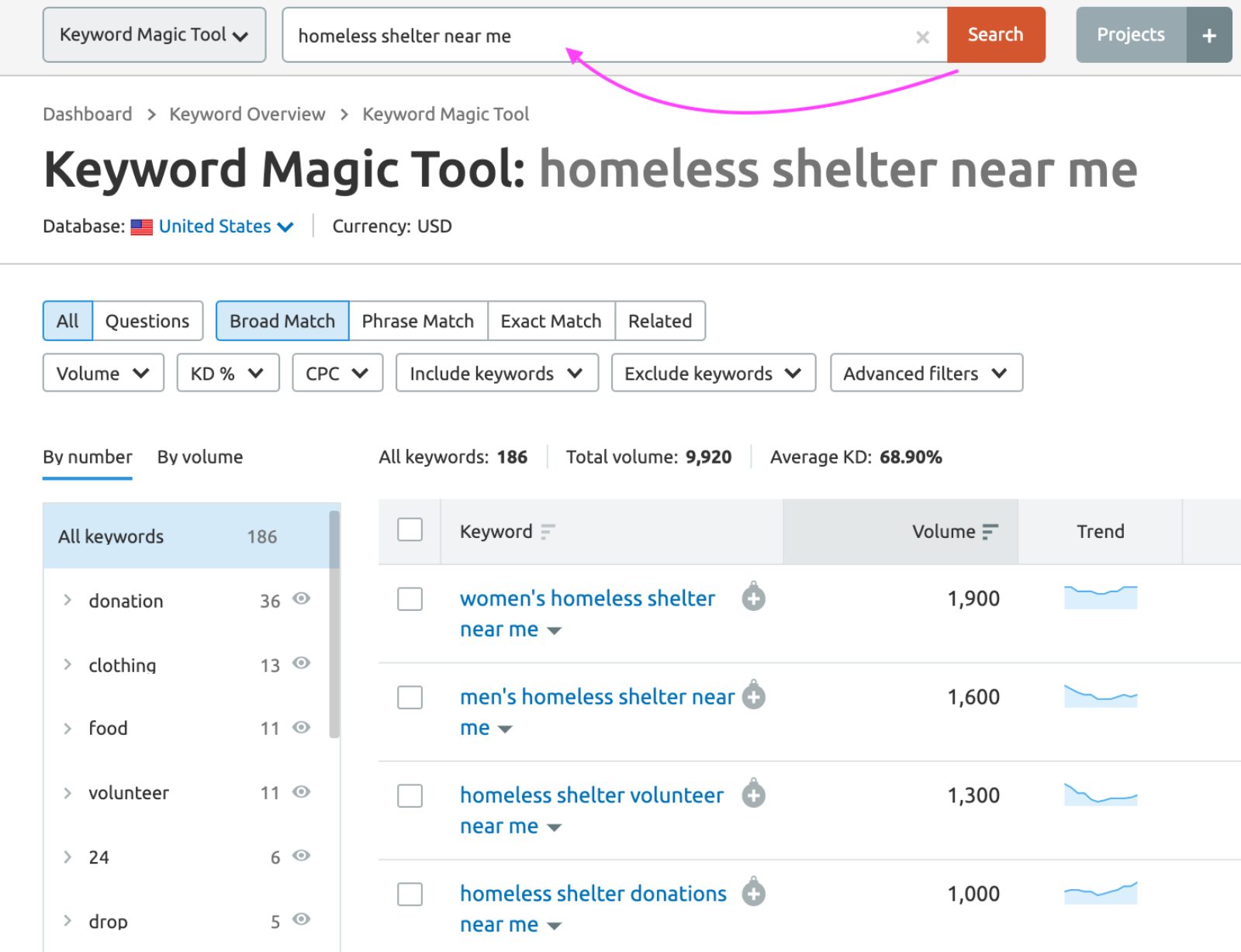
Google Search Console is a free tool from Google that captures queries people use to find your website.
Research and Strategy Using Keywords
Keyword research is closely related to understanding your audience. It’s not enough to find the highest volume of keywords related to your cause.
Find out what keywords are used by your audience and why. Does the keyword imply information gathering, intent to donate or volunteer?
Once you think you understand the intent behind keywords, you can create a strategy to organize your list of keywords to match your organization’s goals.
3. Have SEO Guide The Design of Your Website
Whether you’re ready to launch a new website, maintaining your current one or if you will go through a complete redesign, SEO should always guide the structure and content of your website.
For example, your keyword strategy could include 10 keywords that you want your website to rank on the 1st page and attract organic visitors. You’ll most likely need a few of your pages designed to serve as entry points for those keywords.
If I’m running a homeless shelter, I might make it my goal to focus on 3 categories thanks to my keyword research process.
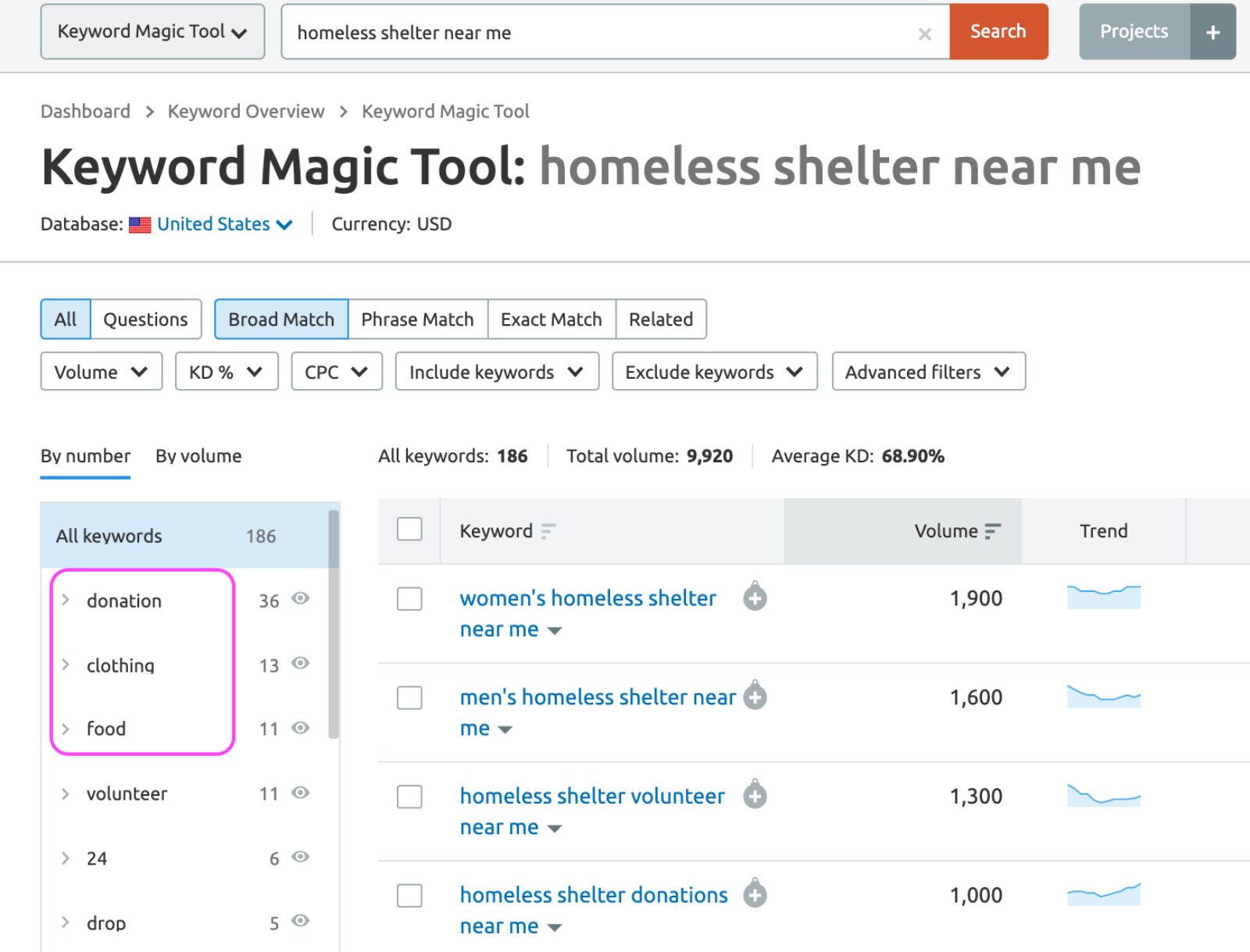
A handful of dedicated pages using a combination of keywords related to homeless shelter and 1) donation 2) clothing 3) food can all be incorporated into the content and organization of my website.
SEO can even influence the overall aesthetic design of your site because certain design elements may limit or allow SEO implementation.
4. Make Your Website SEO Friendly
Implementing technical design elements for each page also relates to the design process. This is generally referred to as On-Page SEO (also called On-Site SEO).
Without getting into too much detail, the general guidelines for good on page seo are the following:
URL Structures
Create Clean URL Structures that communicate main topics and subtopics. It might look something like this for our homeless shelter example:

Page Titles
Use Strategic Page Titles that include your keyword and that match your audience’s search intent. The character length is limited to about 150-160 characters including spaces, but be sure to be descriptive enough and not too short.
HTML Tags
Make proper use of HTML tags that further aid search engines to understand the content of your page.
Internal Links
Insert Internal Links to other related and helpful pages on your website. Just one link for each related content is enough.
Meta Descriptions
Write succinct and engaging meta descriptions that include the keyword. Think of this limited space as a billboard for that page. For instance, the Salvation Army provides an effective and apt description for this topic.

On page SEO factors affect how search engines read your page. That’s why the URL structure, page titles, html tags and internal links need to be well organized. These technical elements are really the bare minimum tasks you can quickly accomplish to make it easy for both search engines and people to read and understand your page.
5. Take Action Outside Your Website to Increase Rankings
These types of actions are considered Off-Page SEO (also called Off-Site SEO). The primary task outside your website is to garner links from quality and relevant websites. The technical term is called link building.
Essentially what link building accomplishes is better credibility. If other websites link to your site, it’s a significant signal that your page demonstrates expertise, authority and trustworthiness.
Just like you might network and get referrals, link building works much in the same way among different websites. Links are challenging to earn, but it’s worth the effort.
Link building is conventionally known as free, earned media much like PR. It differs from official paid partnerships. Our example with Everlane/Oceana is an official donor partnership, but in the end this does boost SEO rankings.

Nonprofits should work hard to network offline but also through social media, and thoughtfully link to other websites in which there can be mutual benefits.
6. Make it Easy For People To Find You Locally
In our previous example query of ‘homeless shelter near me,’ we didn’t talk about the importance of local search results.
Google utilizes specially packaged search results known as knowledge graphs. For a search query like ‘homeless shelter near me,’ your organization’s website should appear as a local knowledge graph for anyone searching within your area.
The result could look something like this if you’re viewing from a browser on a computer:
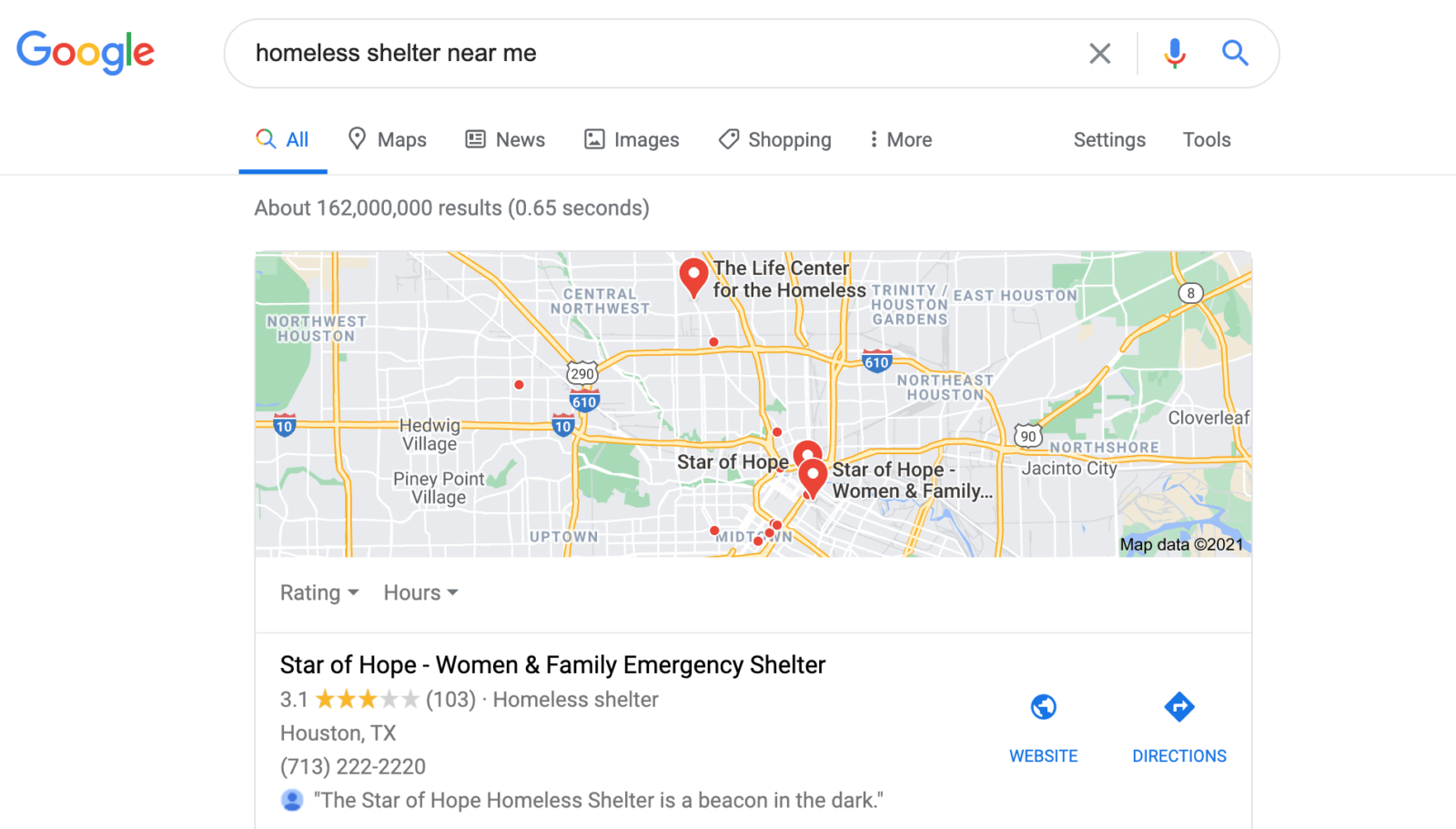
The same search query can bring up different results depending on your location and looks like this if you’re browsing from your mobile device:
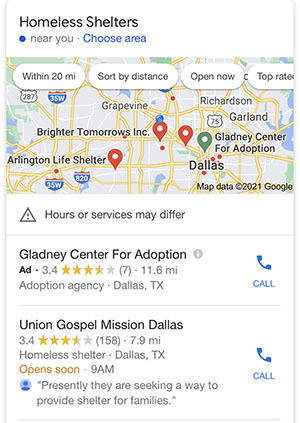
These results show below ads and above standard text search results. They stand out and add huge value for your SEO rankings. If I were a church member looking for a homeless ministry to volunteer with my church during Christmas season, Union Gospel Mission would have been my first shelter to learn more.
7. Make Frugal Use Of Paid Search
Although we’re talking about SEO for nonprofits, Paid Search for nonprofits is equally important.
However, the emphasis here is frugal use of paid search. As previously mentioned, paid search ads appear before any organic search results. As long as your bid is high enough and your chosen keywords relevant, your ad can likely make it to the very top of search.
So if you’re a nonprofit that is pushing an urgent campaign to be noticed with a deadline for results, paid search ads can provide short term results.
The key is to be precise with keywords and to have a well thought out ad and landing page. You want each click to really count, hence be frugal and smart.
Paid search ads shed insight into what keywords work and which ones to avoid. It’s a quick way to accrue data and learn how to implement keyword strategy to your SEO efforts.
If you haven’t yet, go to apply for a Google Grant Application to see if your organization is eligible to use Google tools in order to promote your cause.
8. Write Quality and Relevant Content
Nonprofits exist in part to be the source of expertise to solve a problem. People want quality and relevant information that they can trust, especially when it comes to issues they care deeply about.
So it’s not surprising that expertise, authority and trustworthiness are qualitative factors that Google values.
Be sure to write quality and relevant content that demonstrates your expertise, authority and trustworthiness for a given topic.
Let’s go back to the search term ‘homeless shelter near me.’ The number 1 ranked pages came from Wheels for Wishes.
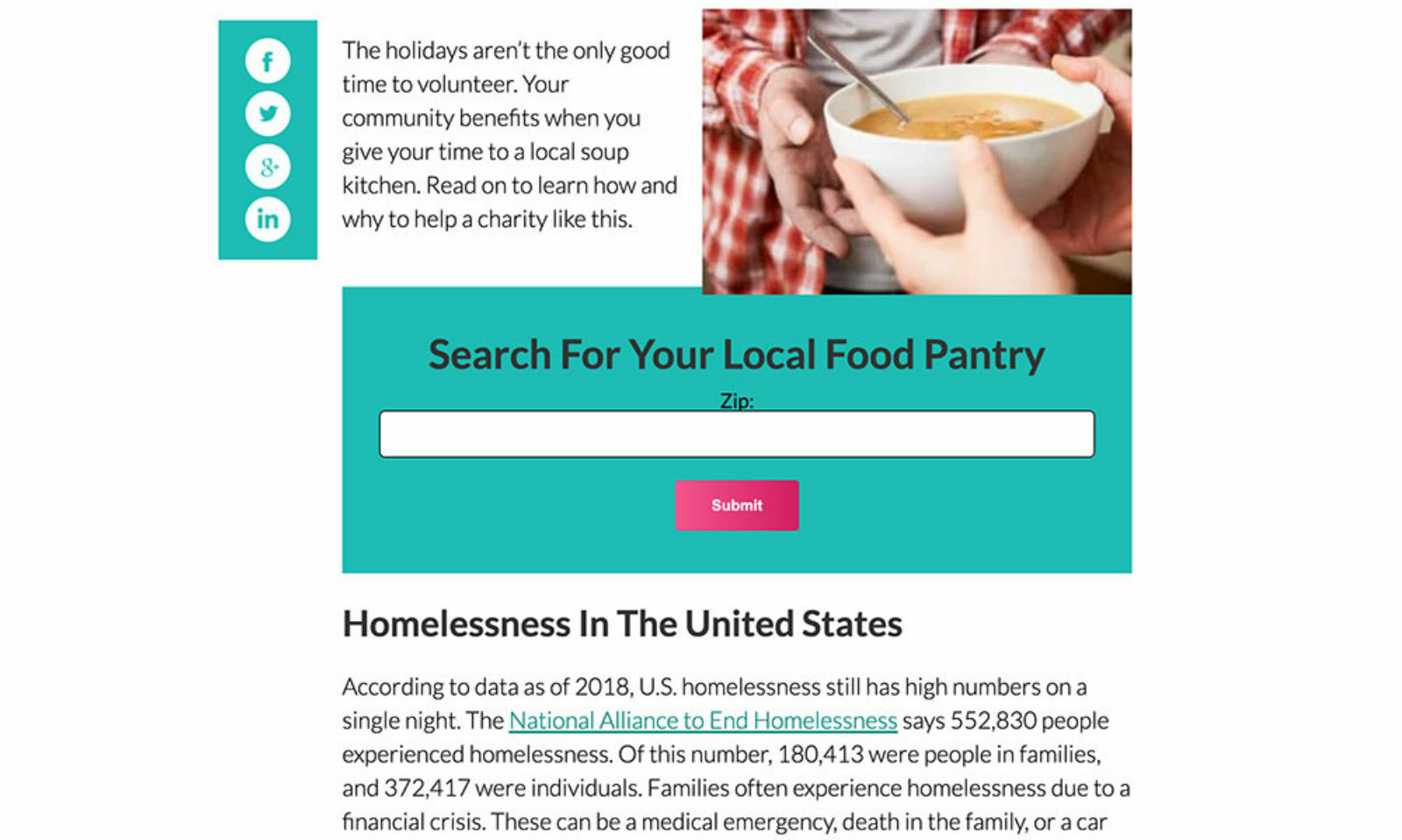
This page has over 300 backlinks from other websites but still ranked higher than pages with over 46,000 backlinks. Why? I think part of it was because of a well written content. It gives statistics and then links to find local shelters nearby. It was both informative and practically useful.
The takeaway? The quality and relevance of this page truly put the audience first, and that sums up the goal of good SEO - think about your audience and what will be useful to them.
9. Measure and Refine Your Strategy
Finally, reporting and measuring results is so important for SEO. Just like any other organization, nonprofits should track results using Google Analytics, Search Console and other SEO products like SEMrush.
But more than just hard metrics, it’s also essential to align metrics with your organization’s mission and purpose.
Your reporting should always circle back to what the desired outcome of your SEO work will be.
Conclusion: SEO for Nonprofits Is Worth It
SEO is worth every minute and effort. It’s an investment for long term benefits but it takes time to get in front of your donors or other type of audience.
The best advice is to start somewhere. You can start small and keep building. Do your research because there is a lot to learn from other organizations.
Contact us and let us know how you want to align SEO with your nonprofit's mission.
